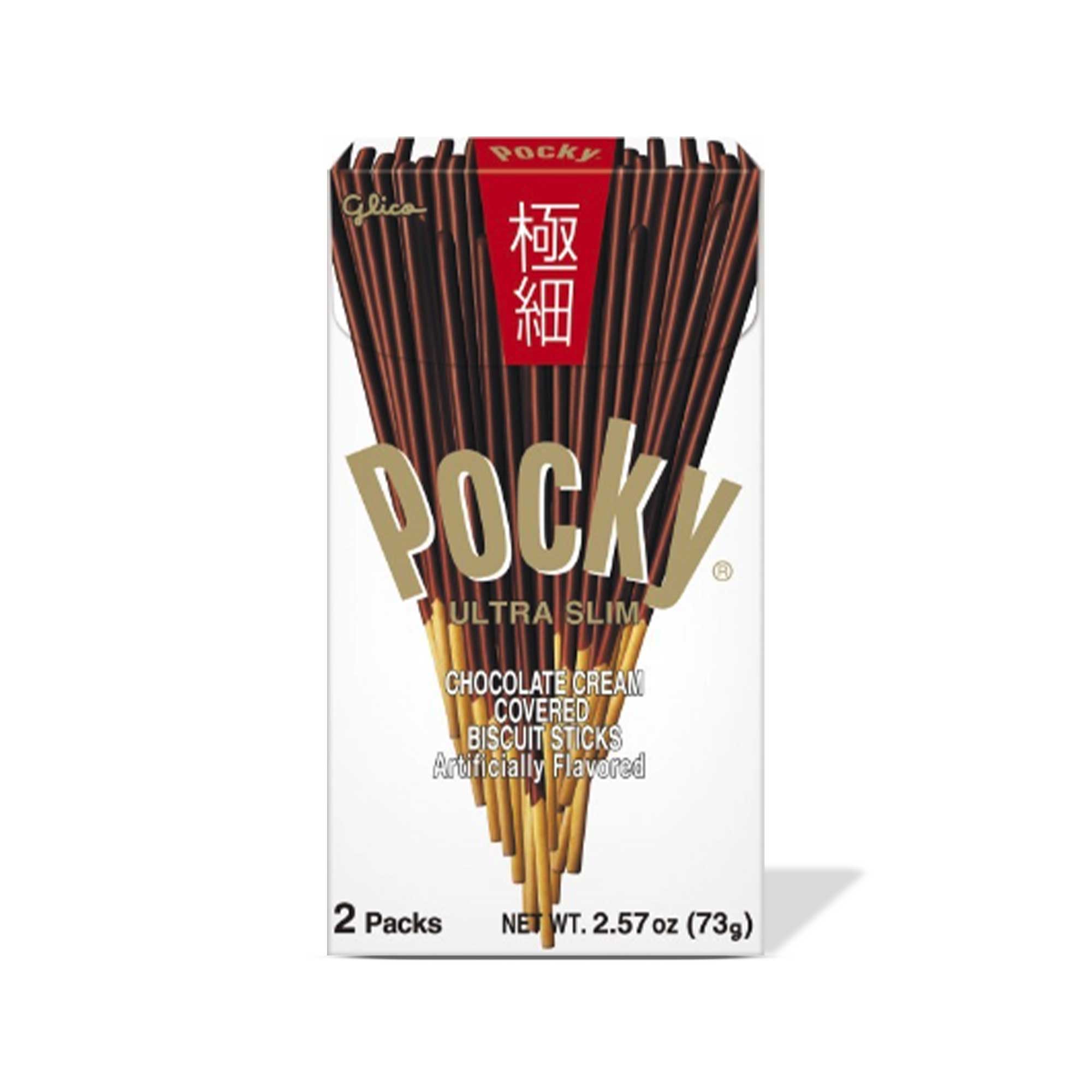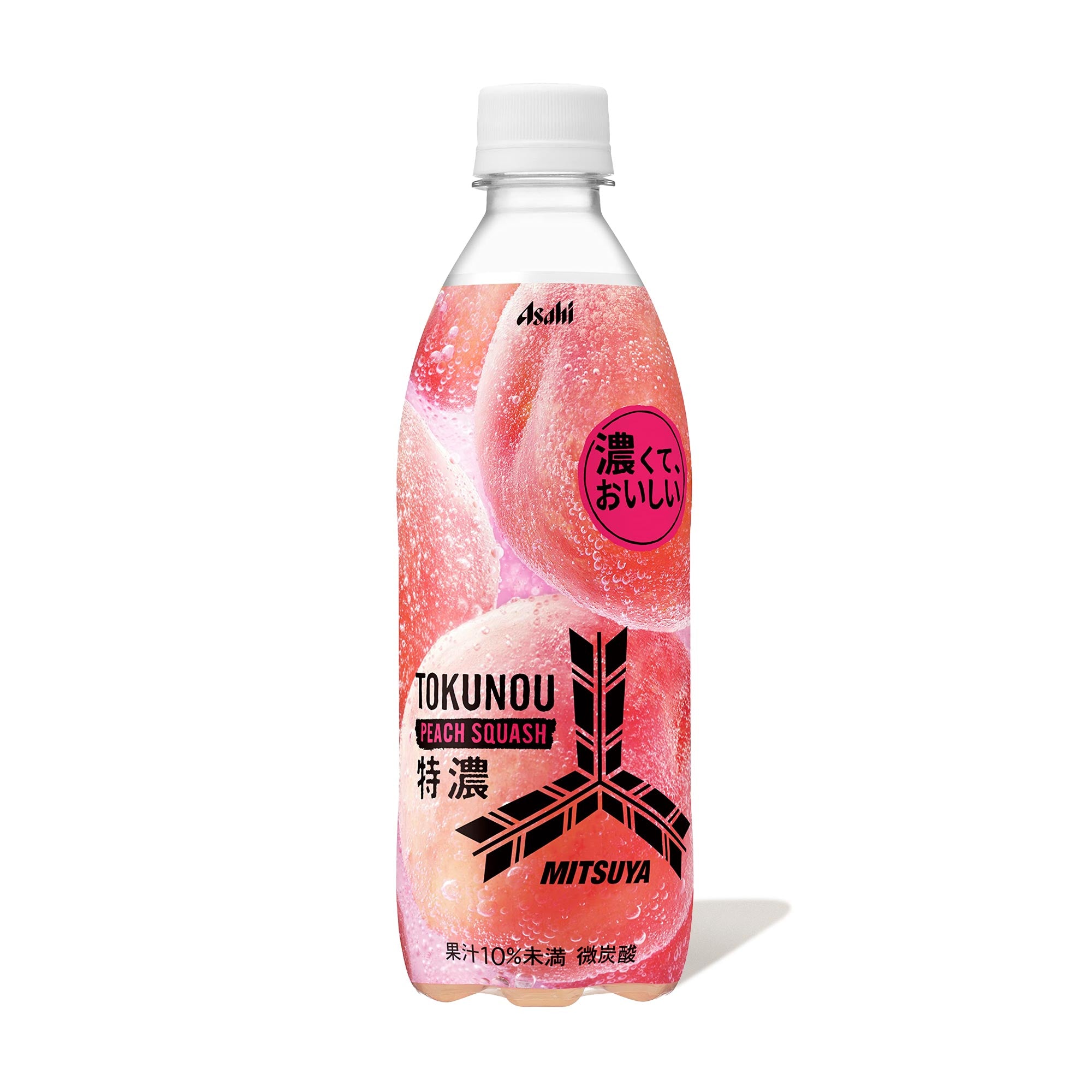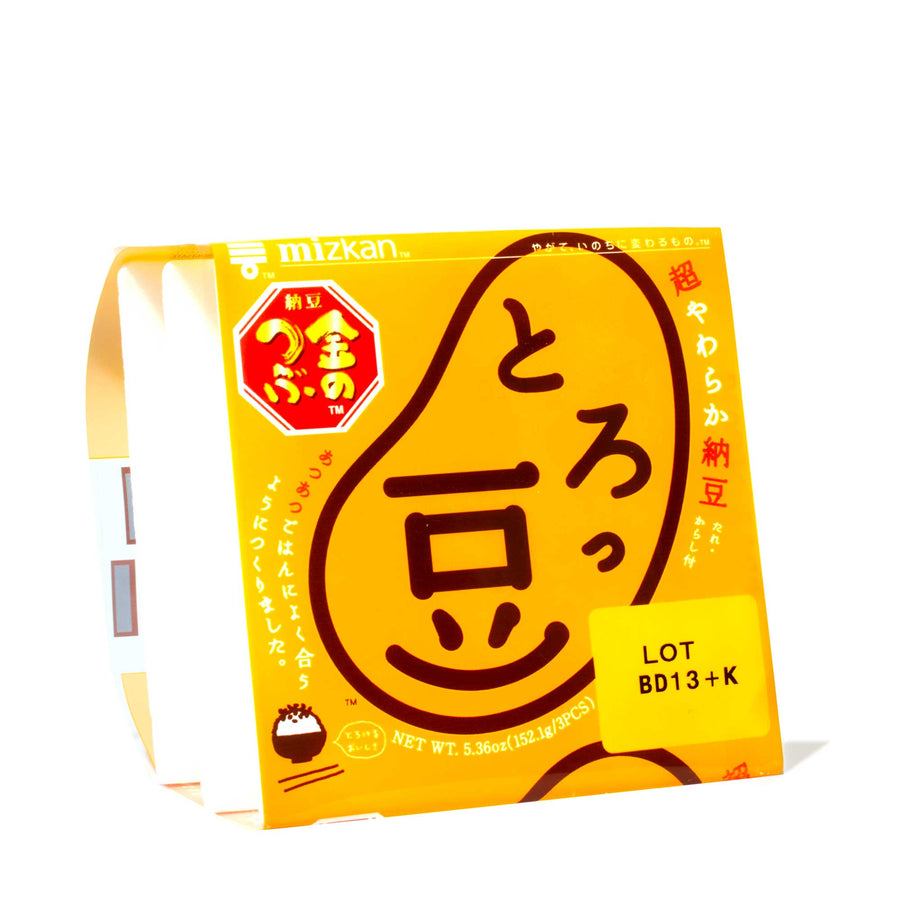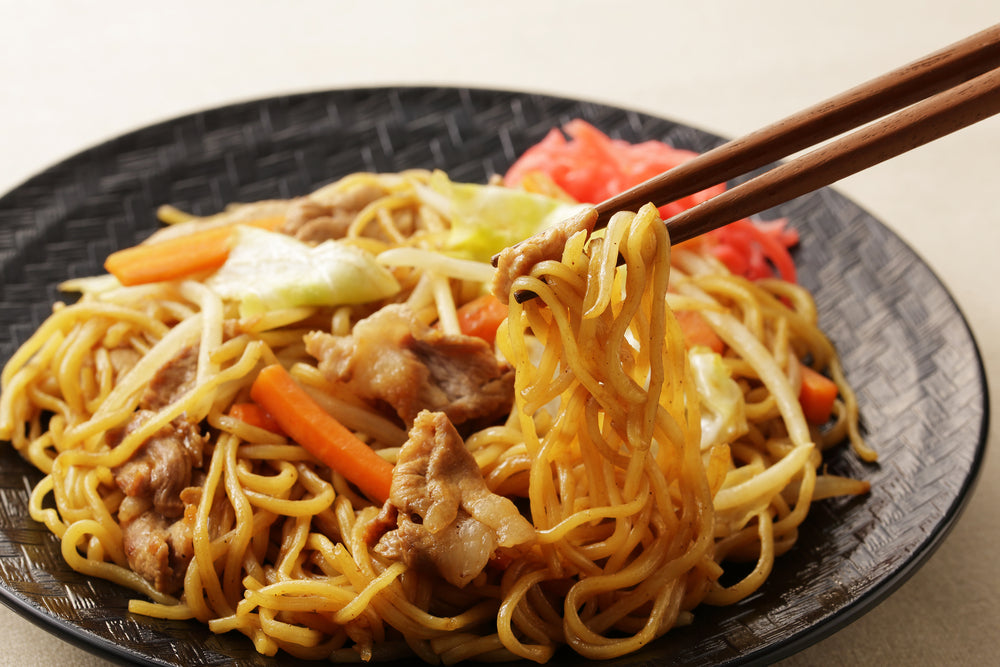Natto: Fermented Soybeans Delight - What You Need To Know About This Japanese Superfood

The Allure of Traditional Japanese Food - Natto Beans
Natto Beans are a staple in every Japanese home. It is popularly known for its unique slimy texture, and acquired taste yet packed with various nutritional health perspective. It contains potential health benefits such as probiotics, folate, antioxidants, and essential vitamins such as vitamin C and vitamin k2. A traditional Japanese breakfast consists of a natto recipe either with sticky white rice or bread toast. There are several ways in preparing natto, you can add a little soy sauce or enjoy natto served as hot soybeans.
While there are various Asian grocery store and Japanese supermarkets selling natto products, at Bokksumarket, we're excited to spotlight the "Mizkan Natto Fermented Soybeans" – a product that embodies the essence of this fermented food. But what is it about natto that has the world buzzing?
The Origins of Natto: A Time-Honored Traditional Japanese Dish
The Ancient Discovery of Natto
When you eat natto, you'll feel a distinctive taste and gooey texture. This fermented food is a cherished element in Japanese cuisine. Its roots delve deep into the annals of history. This fermented food has been a part of the Japanese diet for over a thousand years. But how did this unique dish come to be?
Natto is a traditional food that originates way back to the Heian period (794 to 1185 AD). Legend has it that natto was discovered accidentally by Japanese warriors. They had boiled soybeans for sustenance, and while on the move, stored the cooked soybeans in rice straw. The combination of the bacteria starter naturally present in the straw, bacillus subtilis natto, with the warm, moist environment led to the fermentation of the beans. When the warriors opened their food pouches, they were met with the now-familiar sticky, stringy cooked beans. Despite its unexpected origins, the warriors found the natto taste like palatable and recognized the dish's potential as a nutritious food source.

The Evolution and Popularity of Natto
Over the centuries, the process of making natto was refined. The traditional method involved wrapping soaked and boiled soybeans in rice straw. Naturally, it contains the natto bacteria essential for the storage natto fermentation. This method ensured that the soaked beans fermented and transformed into the natto that many have come to love.
Cultural texts and manuscripts from various Japanese eras have mentioned natto, highlighting its significance in daily life. It was not only a source of sustenance but also believed to have medicinal properties. Over time, as the benefits of fermented foods became more widely recognized, natto's popularity surged. The Edo period (1603 to 1868 AD) saw an increase in natto consumption, especially in the northeastern regions of Japan. It became a common breakfast food, often served atop warm Japanese rice, sometimes accompanied by a raw egg or chopped onions. Its nutritional profile, combined with its ability to be stored for extended periods, made it a valuable food source for both peasants and samurai alike.
Natto in the Modern Era
In modern times, the production of natto has become more streamlined, with factories employing advanced techniques to ensure consistency and quality. However, the essence of natto remains unchanged. It's a bridge to the past, a testament to Japan's rich culinary heritage, and a reflection of the nation's ability to preserve and honor its traditions.
Today, as the world becomes more interconnected and global palates expand, natto is no longer confined to Japan. Chefs, nutritionists, and food enthusiasts around the world recognize natto as a cornerstone in any Japanese cuisine. They have also incorporated this into other dishes, they add natto creatively. This ancient dish continues to be relevant with its myriad of health benefits. Studies showed that when you eat natto, you lessen the risk of cardiovascular disease, slow age related loss, improve bone mineral density, and maintain normal blood pressure.
Natto has also become accessible to every household not just in Japan but to any Asian grocery stores where natto sold. Store bought natto has been a household staple, making it easy to make them when you want to eat natto or want to serve natto to your guests.

The Art and Science of Making Natto
The Foundations of Natto: Selecting and Preparing the Beans
The creation of natto is a harmonious blend of traditional artistry and scientific precision. This fermented delicacy, with its characteristic stringiness and robust flavor, begins its journey with the selection of high-quality soybeans. Once chosen, these beans are soaked in water, allowing them to absorb moisture and swell to approximately twice their original size. This soaking not only softens the beans but also activates enzymes that play a crucial role in the fermentation process. After soaking, the beans are steamed or boiled until tender, ensuring they are cooked thoroughly. The choice between steaming and boiling can influence the final texture and taste of the natto, with steaming often preferred over boiling water, for its ability to retain the bean's inherent flavors.
The Magic of Fermentation: Introducing Bacillus subtilis
The true transformation of the soybeans into natto begins with the introduction of the bacterium in natto. Traditionally sourced from rice straw, modern production often turns to cultured versions of this bacterium to ensure consistency. Once introduced to the cooked soybeans, they are left in a warm environment to ferment. Over the next 24 hours, Bacillus subtilis works diligently, breaking down the beans' proteins and carbohydrates. This microbial activity results in the production of the sticky substance that natto is renowned for. The environment in which natto ferments is paramount. Temperature and humidity levels are carefully monitored to ensure optimal fermentation, preventing any spoilage.

Perfecting the Process: Aging and Flavor Development
After the fermentation process, the journey of natto isn't quite complete. The fresh natto is cooled and then aged for several days, allowing it to develop its distinctive flavor profile. This aging process is crucial, as it lets the flavors meld and intensify, resulting in the rich, earthy taste that natto enthusiasts cherish. The final product stands as a testament to the delicate balance of art and science, offering a food that is not only rich in history and flavor but also packed with nutritional benefits.
Navigating the Natto Taste Spectrum
The Flavor Profile of Natto: An Earthy Delight
Natto, with its unique texture and flavor profile, has carved a niche for itself in the culinary world. For many, their maiden encounter with natto is etched in memory, often accompanied by strong reactions. Delving into its taste, natto boasts an earthy, nutty flavor, drawing parallels with certain aged cheeses or other fermented foods. This foundational flavor is accentuated by umami undertones, adding layers of depth and complexity. The fermentation journey introduces a mild tanginess to the beans, reminiscent of the sour hints in yogurt or specific fermented beans. Some palates might even discern a subtle bitterness, enriching its multifaceted taste.
Texture, Serving, Soy Sauce and the Evolution of Taste
Beyond its flavor, natto's texture is a defining characteristic. Its sticky, stringy nature sets it apart from most foods. A simple stir reveals long, gooey threads, captivating for some and challenging for others. This characteristic sliminess, coupled with the tender fermented soybeans, offers a unique mouthfeel.
How natto is served can significantly influence its taste. Traditional pairings, such as soy sauce, chopped green onions, and Japanese mustard, can either enhance or balance its flavors. A hint of soy sauce accentuates the umami, while the zest of green onions or mustard introduces a refreshing contrast.
For many in Japan, natto evokes nostalgia, reminiscent of familial breakfasts and communal meals. Yet, for the unacquainted, it might be an acquired taste, challenging preconceived notions of flavor. But as one delves deeper, exploring its nuances, natto transitions from a mystery to a cherished dish. It beckons exploration and, over time, transforms skeptics into aficionados. Navigating the taste spectrum of natto isn't just about savoring a dish; it's an enriching culinary journey.
Eating Natto: A Ritual and a Delight
Natto, deeply embedded in the fabric of Japanese culinary traditions, represents more than just a dish; it embodies a rich cultural experience. This fermented soybean delicacy, with its unmistakable sticky texture and potent flavor profile, has been a staple in Japanese households for centuries.
The ritual of eating natto often begins with a bed of freshly steamed, warm rice. The natto is then carefully placed atop, its stringy tendrils weaving a tapestry of flavors. To enhance its taste, a raw egg is sometimes cracked over the beans, its yolk adding a creamy richness. A sprinkle of chopped green onions provides a burst of freshness, while a drizzle of soy sauce deepens the umami notes, creating a harmonious symphony of flavors in every bite.
For many in Japan, eating natto is a cherished morning ritual. It's not just about nourishing the body but also connecting with history. Each bite is a nod to the generations before, who recognized the nutritional benefits of these fermented beans and incorporated them into daily meals. The dish also serves as a testament to the Japanese commitment to preserving and celebrating age-old culinary practices.
Beyond its traditional presentation, natto's versatility shines through in various dishes. From being wrapped in sushi rolls to being incorporated in salads and stir-fries, natto's unique flavor and texture add depth and character to a plethora of recipes.

Health Benefits: Beyond Just Fermented Beans
Natto, while celebrated for its unique taste and texture, is also a beacon of health benefits. This fermented soybean dish is a rich source of vitamin K specifically vitamin k2, essential for bone health and calcium metabolism. The enzyme nattokinase, exclusive to natto, has garnered attention in the medical community for its potential role in promoting heart health, improving blood circulation, and faster healing and recovery of blood clots or blood clotting.
Furthermore, as a fermented delicacy, natto is a reservoir of probiotics, beneficial bacteria that support gut health and digestion. Its high protein content, combined with a plethora of essential minerals and vitamins, positions natto as a holistic food choice, offering benefits that extend far beyond its fermented nature.
Creating Your Own Natto or Homemade Natto: Crafting Culinary Magic
There's something profoundly satisfying about crafting natto in the comfort of one's kitchen. It is an intricate process that often dives deep into the art of fermentation. Starting with selecting high-quality soybeans, the journey involves soaking, boiling, and the crucial step of introducing the bacillus subtilis bacteria for fermentation. As the beans undergo this transformation, the anticipation builds, culminating in the joy of witnessing the formation of the characteristic sticky, stringy natto. This homemade version, devoid of commercial preservatives, captures the authentic essence and freshness of traditional natto, making every bite a testament to one's culinary prowess.
Mizkan Natto: A Cut Above the Rest
Amidst the plethora of fermented foods available today, "Mizkan Natto Fermented Soybeans" carves its niche. This premium offering from Bokksumarket is a representation of tradition, authenticity, and unmatched quality. Sourced from the finest soybean farms and fermented under meticulously controlled conditions. When you purchase natto - Mizkan Natto promises an experience that is both traditional and contemporary. Its impeccable texture, rich flavor profile, and unparalleled nutritional benefits make it a top choice for discerning consumers seeking the genuine taste and essence of natto.
Serving Natto: A Culinary Canvas
Natto, in its versatility, offers a canvas for culinary creativity. While the classic serving over steamed rice remains a favorite, the world of natto-infused dishes is vast and varied. From sushi rolls that feature natto as a star ingredient to soups that carry its distinctive flavor, the possibilities are endless. Creative toppings, be it the sharpness of green onions, the tang of Japanese mustard, or the savory depth of soy sauce, can elevate the natto dining experience. Each serving, each dish, becomes a customizable culinary journey, allowing one to explore and experiment with this unique ingredient.

The Science Behind Natto's Benefits
The accolades of natto are not merely rooted in ancient traditions; they are reinforced by modern science. Numerous studies have delved into the myriad health benefits of natto. The enzyme nattokinase has been the subject of research for its potential cardiovascular benefits. The rich probiotic content of natto has been linked to improved gut health and digestion. Furthermore, the significant presence of vitamin K2 and its role in supporting bone health has been well-documented in scientific literature. Thus, natto stands as a testament to the harmonious blend of age-old wisdom and contemporary scientific validation.
A Commitment to Quality
Bokksu Market is not just a marketplace; it's a promise of authenticity and unparalleled quality. Each product, especially the Mizkan Natto, reflects our unwavering dedication to bringing the finest of Japanese cuisine to our global clientele. We understand the intricacies and nuances of traditional foods, and our offerings are curated with a deep respect for these traditions. Our commitment goes beyond mere transactions; we aim to offer an immersive experience, ensuring that every product resonates with the rich heritage it represents. With us customers are not just making a purchase; they are embracing a legacy of genuine, high-quality culinary experiences.
Embracing the World of Natto
Natto, with its rich history, myriad health benefits, and unique taste, is a gem in the world of fermented foods. Its place in Japanese culture, its growing popularity worldwide, and its undeniable health benefits make it a must-try. We invite you to explore this Japanese marvel with us. Dive into the world of natto, savor its flavors, reap its benefits, and let it become a part of your culinary journey. Ready to embark on this flavorful adventure? Explore Mizkan Natto Fermented Soybeans.
Author Bio












